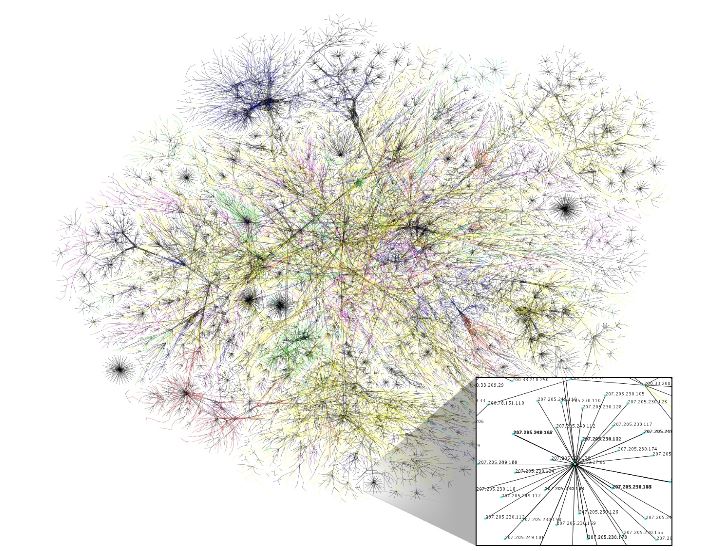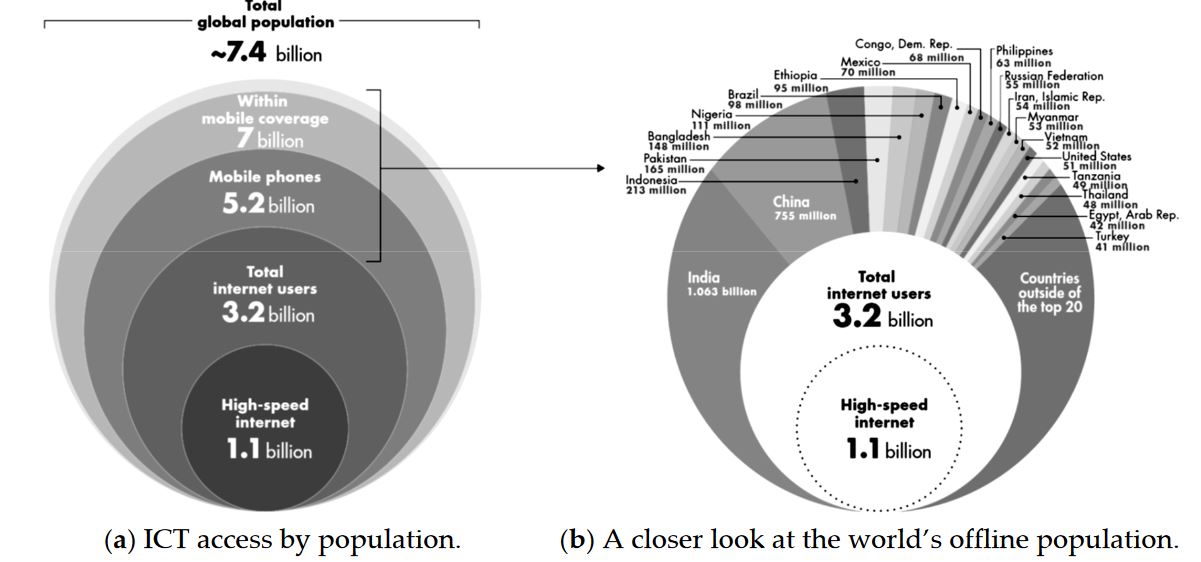ABSTRACT
The very common Internet citizen has a very restricted autonomous capacity to move through the network which is becoming the everst retching milieu where our lives take place. At the same time, the capacity to manage relevant information from ourselves and the environment we are living in offers new avenues to deal with healthcare, sustainability issues and problems of many different kinds and significant social concern which were previously insufficiently attended. While the actual structure of the Internet, geared by big-data technologies, exhibits a network topology highly concentrated, the authors propose a cyber-subsidiary model which may solve the conundrum where the human condition seem to be trapped in a blind alley.
AN ALLEGORICAL VIEW TO THE STRUCTURE OF THE INTERNET

Figure 1. Small look at the backbone of the Internet, actually less than 30% of the Class C networks reachable by the data collection program in early 2005
In order to consider the human position in the Internet properly, the network of Internet nodes and lines, as typically represented by the IP addresses network (such as Figure 1), is not enough. One need to consider how people actually connect to one another and with other digital assets. We will scrutinize this complex issue in a network theoretical perspective, but first let us approach it allegorically through a more visible but fictional urban landscape: Imagine a kind of city constituted by a vast number of squares, where people meet and engage in different activities, but among which there is a scarce number of streets you can see. Some people move along them, but if you pay close attention, the number of people popping up or leaving each square are much more than the ones moving along the streets.

Figure 4. ICT access by population. High-speed access is restricted to just the 15% of the population, while Internet remains unavailable, inaccessible and unaffordable to a majority of the world’s population
How can the huge gap between digital society center and periphery be closed? If the offer and demand of ICT resources is exclusively driven by monetary value, as it is in a substantial extent, the used approach to keep pace of customers demand cannot suffice to satisfy peoples demand, unless there is a minimal equality among people’s purchasing power, which is far from being the case. The problem is even worse if we consider that telecommunication rates are more expensive the further away you are from the economic center of the Internet (i.e., where more traffic is concentrated), due to the fact that the corresponding service provider is paying more expensive “transit” agreements to interconnect their networks.
Source: Munich University
Authors: Jose Maria Diaz-Nafria | Teresa Guarda